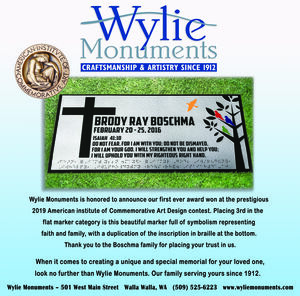Why I Voted to Disband the Southside Historic District
When an advisory ballot was sent to property owners in Dayton's Southside Historic District this spring asking whether they support disbanding the district or keeping it, about two out of three respondents voted for the former. Results were similar for the smaller Washington Street Historic District.
But despite the overwhelming wishes of those property owners, the Dayton Historic Preservation Commission voted last week against passing that recommendation on the City Council. (See story on Page 1.)
I am co-owner of a rental house which sits within the boundaries of the Southside district, and so I got to vote. I voted with the majority, and here's why:
Our little yellow house is well over 50 years old, which means it falls into the government's regulatory definition of "historic."
However, no visitor driving around Dayton looking for historic homes to admire, of which there are many, would ever take their foot off the gas pedal for this one. And yet...
A few years ago, sometime after the Southside District was formed, I began remodeling that house. One of the improvements was to replace the old single-pane windows and worn-out doors with modern insulated ones.
Because the house is in the Historic District, I was required to go in front of the Dayton Historic Preservation Commission prior to beginning that job to determine whether the new windows and doors I planned to install would pass muster with them.
I got to listen to a long conversation among commission members about historic window and door designs and how important it was to maintain the same size proportion between the upper and lower panes of the new windows I would be installing as the old ones had. This was puzzling to me, since I'm quite sure the people who built that house in the 1940s didn't give two seconds thought to that issue, but simply acquired the cheapest windows available.
Then I explained to the commission that in order to put a shower in the bathroom, which had only a tub then, I would be replacing the large single-hung window over the tub with a small horizontal window installed above the shower surround. I was informed that this would not be allowed, and that I wouldn't be able to get a building permit to do it.
As you can see in the photo, I did it anyway, sans permit. In doing so, I completely ignored the harm that little window would inflict on Dayton's tourism industry. At least the tenants can take a shower.
This brings me to the two main reasons I voted to do away with the historic district:
First, the Historic Preservation Commission has made rulings on items that in no way had a significant impact on the historic nature of these neighborhoods. The windows in our little house are a perfect example. This was simply regulatory overreach.
Second, this was my house, not theirs. And in remodeling it, I had a vision for it. When someone invests the money necessary to purchase a home, they are going to have their own vision for it, and they are going to take pride in their vision. That's even more true when the home is occupied by its owner. That vision should be respected.
But since these historic districts were created, the Historic Preservation Commission has made it its mission to override homeowners' visions and impose their own vision by force of law. I think this gets to the real reason Dayton homeowners voted ovewrwhelmingly to reject the districts.
Dayton and Waitsburg both have many beautiful historic homes and buildings. Working to maintain the historic nature of these towns is very important.
But it needs to be voluntary. Almost everyone who buys one of our beautiful historic homes desires to maintain its historic appearance. That's been true since well before the two residential districts were formed.
I have no problem with encouraging owners of historically significant homes to accurately restore them, and to seek the expertise of Historic Preservation Commission members when doing so. And, by all means, we should offer tax incentives to homeowners who do this. But these measures should not be imposed on homeowners against their will.
We've created an environment where the majority of homeowners within Dayton's historic districts now have a negative view the historic preservation process. That is only going to hurt historic preservation efforts in the long run.
The Dayton City Council should move quickly to heed homeowners' wishes and disband Dayton's two residential historic districts.










Reader Comments(0)